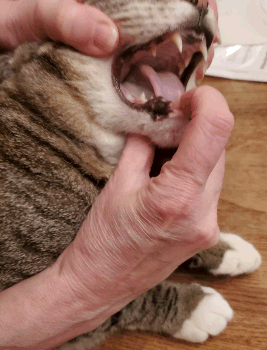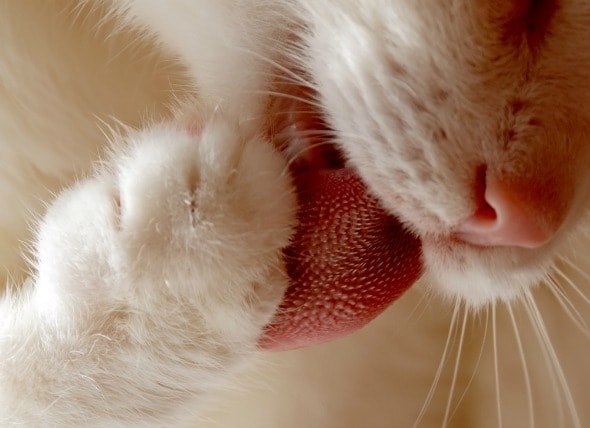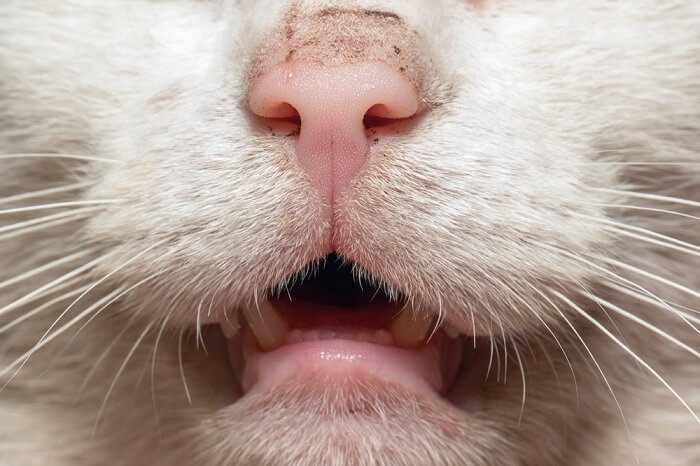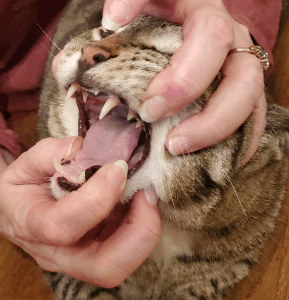Sarcoma In Cats Mouth
This type of cancer invades surrounding structures of the mouth including the mandible, maxilla, dental arcade, tongue and other portions of the oral cavity. How long does a cat live with sarcoma?
Oral Squamous Cell Carcinoma In Cats - Veterinary Partner - Vin
Lumps may be fleshy or firm.

Sarcoma in cats mouth. The sarcomas often formed in common vaccination sites. Most common skin tumor in the cat in some surveys. Oral (mouth) cancer in cats the most common oral cancer in cats is squamous cell carcinoma.
Mouth cancer is cats is commonly caused by the oral malignancy known as squamous cell carcinoma. The prognosis for oral squamous cell carcinoma in cats is guarded with a median (average) survival time of less than one month. Vaccine associated fibrosarcomas are tumors that arise at sites where cats have been vaccinated.
Cats with osteosarcoma of the jaw (a form of axial osteosarcoma) may have swelling of the jaw, difficulty opening the mouth, excessive salivation, and may be reluctant to eat due to pain. Causes of mouth cancer in cats It also includes lips, the hard and soft palate (roof of the mouth), upper and lower jaw, cheeks, tongue, and the floor of the mouth.
A mass that you can feel. Lumps may be fleshy or firm; The duration and the location of this tumor affects the prognosis.
The head, legs, in the mouth and anywhere else on its body. The most common oral tumor seen in cats is squamous cell carcinoma; Most soft tissue sarcomas are solitary tumors in middle to older aged pets and tend to be
Squamous cell carcinoma is the most common oral tumor seen in cats. The longest control and survival rates have been obtained using a combination of radiation therapy and mitoxantrone chemotherapy. Clinical stage and location are the most consistent and reliable prognostic factors.
Symptoms of fibrosarcoma in cats the cat’s owner is most likely to notice lumps just underneath the surface of the cat’s skin. If an osteosarcoma develops elsewhere in the skull or vertebrae, swelling and pain in the head or along the back may be observed. Oral bone tumors (osteosarcoma) in cats and dogs.
Nasal lsa is rare in both species, but more common. Diagnosis may be performed through fine needle aspiration or biopsy. The head, legs, in the mouth and anywhere else on its body.
Surgery, radiation therapy, and chemotherapy. How common are these tumors? 1 it accounts for about 90% of oral tumors in felines.
Squamous cell carcinoma is the most common oral cancer in cats. Fibrosarcomas can also develop inside the cat’s body; These lumps can appear anywhere on the cat’s body:
Occur anywhere in the mouth, including under the tongue, along the palate (roof of the mouth), the upper jaw (maxilla) or the lower jaw (mandible) invade bone and therefore can be associated with significant discomfort and/or swelling along the jaw. In particular, i’m thinking of siamese cats, who are 8 times more likely to develop intestinal cancer than other feline breeds. These tissues represent 15% of all skin tumors and 7% of all subcutaneous tumors in cats and dogs.
In contrast to the situation in dogs, oral scc in cats is a highly aggressive disease that responds poorly to surgical treatment or to radiation therapy regardless of its location in the mouth. A relationship was soon established between these tumors and vaccines such as rabies and felv. Common stss in cats and dogs are:
Usually on its spine, in the pelvis, or in its ribs. Oral scc in cats typically: These tumors typically affect a bone in the limbs such as the shoulder, stifle or knee, but occasionally, these tumors can affect bones in the skull,.
These lumps can appear anywhere on the cat’s body: Osteosarcoma is a malignant tumor of the bone. Classifies the known soft tissue sarcomas, their origin and potential for metastasis (spread to other organs).
Squamous cell carcinoma cancer is often detected too late and treatments prove ineffective. It is now believed that certain cats have a predisposition to develop these tumors. Oral cancer leads to the formation of harmful swellings or other lesions within the oral cavity, along the gums, palate (roof the mouth), or within the throat.
The second most common is fibrosarcoma. Develop as large, invasive and often ulcerated tumors. Soft tissue sarcomas are grouped together because they biologically act similarly.
Surgery alone or in combination with radiation therapy are used to treat the tumor at its original location, and chemotherapy is usually used to prevent or at least slow down the process of metastasis in pets diagnosed with tumor. A very personal clinical case! The most common malignant oral tumor (by far) in cats is squamous cell carcinoma.
Most cats are humanely euthanised due to the inability to eat or pain associated with the oral mass. Neoplastic proliferation of connective tissue. In our experience, tumors located more anterior, or toward the front of the mouth, have a better chance for surgical treatment, and a better long term prognosis.
However, the predominant symptoms are: There are three main treatment options available to treat soft tissue sarcoma in cats and dogs: Both of these tumors are locally aggressive, can grow to a large size very quickly, ulcerate, and cause considerable pain.
Male cats are more at risk than females and some breeds are also more susceptible to this type of cancer. They are most commonly associated with the rabies vaccine and the vaccine for feline leukemia virus. The cat may not feel pain from the lumps;

What Causes Oral Cancer In Cats And What Tests You Need To Know About Vlog 125 - Youtube

Common Oral Tumors In Cats And Dogs - Vet In Aurora The Animal Dental Clinic

Cat Vomiting Types Causes And Treatments And A Look At Common Cancers Mccleary Animal Hospital

Mouth Cancer In Cats - Symptoms Causes Diagnosis Treatment Recovery Management Cost

Tongue Cancer Squamous Cell Carcinoma In Cats Petmd
Signs Of Mouth Cancer In Cats Oral Cancer Patient 2 - Orlando Veterinary Dentistry Check Out 10 Signs Of Cancer In Cats

Co2 Laser Can Treat Many Feline Ailments

Oral Tumors In Cats - Centennial Animal Hospital

Mouth Cancer Melanocytic In Cats Petmd

Oral Squamous Cell Carcinoma In Cats An Overview - Vet In Aurora The Animal Dental Clinic
Oral Tumors In Dogs Cats Pets - Pet Oral Cancer - Veterinary Dentist - Wisconsin Oshkosh Green Bay Greenfield Glendale- Dr Kressin

Cat Mouth Cancer Natural Treatment Free Shipping Available

Mouth Cancer In Cats Causes Symptoms Treatment - All About Cats
Oral Squamous Cell Carcinoma In Cats - Veterinary Partner - Vin

Cat With Giant Tumor Finally Gets Her Smile Back But Now Shes Looking For Home Beautiful Cats Cats Beautiful Smile

Oral Tumors In Dogs And Cats - Uvh

Diagnosis And Treatment Of A Feline Oral Mast Cell Tumor - Sciencedirect

Mouth Cancer Gingiva Squamous Cell Carcinoma In Cats Petmd

Learn Now With This Article On Dermatology By Masahiko Nagata And Wayne S Rosenkrantz

